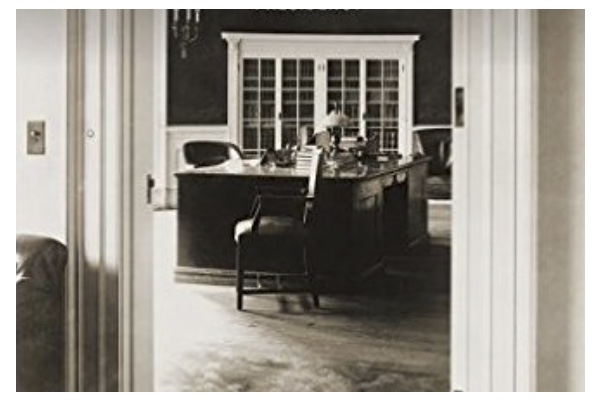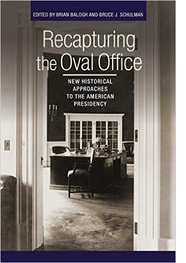Why Academic Historians Should Focus Once Again on the American Presidency

InsideJobs.com, the popular career advice website, includes “presidential historian” among the jobs it profiles; it even lists a salary range and suggests the required personal characteristics (you should be “levelheaded,” holding “your emotions in check, even in tough situations”). A “Presidential Historian,” the site explains, “is the person who knows the childhood of George Washington, the political views of Thomas Jefferson, and the height of Abraham Lincoln’s hat.”
 Even though
Inside.Jobs.com has taken the time to define the position, and
despite the unrivaled impact of the presidency in modern American
life and the widespread popular interest in the office and its
occupants, there do not appear to be many takers – at least from
within the nation’s elite history departments. As of a few years
ago, of the roughly seventy first books (the product of
dissertations) published by twentieth-century U.S. historians who
were teaching at the top fifteen history departments over the
previous two decades, only one dealt largely with the presidency.
Studies of the presidency have long remained
outside the mainstream of American historical scholarship, little
influencing and little influenced by the field’s central concerns,
debates, and approaches.
Even though
Inside.Jobs.com has taken the time to define the position, and
despite the unrivaled impact of the presidency in modern American
life and the widespread popular interest in the office and its
occupants, there do not appear to be many takers – at least from
within the nation’s elite history departments. As of a few years
ago, of the roughly seventy first books (the product of
dissertations) published by twentieth-century U.S. historians who
were teaching at the top fifteen history departments over the
previous two decades, only one dealt largely with the presidency.
Studies of the presidency have long remained
outside the mainstream of American historical scholarship, little
influencing and little influenced by the field’s central concerns,
debates, and approaches.
That is why we brought together some leading historians and political scientists – many of whom had never written about the presidency before. We asked them to explain this puzzle and chart a course that might revive interest in the presidency in leading departments of history.
Why did historians stop studying the presidency? The decline of political history certainly provides a partial answer. But it was not simply the emergence of social and cultural history that reduced presidents to bystanders in the march of history: It was first and foremost several generations of political and policy historians who abandoned the Oval Office. That is why presidents remain on the outside looking in at the historical profession today, even as political history has rebounded within the academy. Several generations of political historians had quite self-consciously constructed an approach to their topic that displaced the “presidential synthesis” forged by the likes of John Morton Blum, John Milton Cooper, and Arthur Schlesinger Jr.
Recapturing the Oval Office argues that the time has come to remove study of the presidency from the historical profession’s endangered species list. Now is a propitious time to integrate the presidency into cutting-edge historical scholarship because we know so much more about the context in which presidents operate and the structures that guide, and often limit, their actions and beliefs. We know this thanks to those very same social and cultural historians who were often blamed for diverting interest from the presidency.
A brief foray into the history of race relations underscores why this is a good time to “bring the president back in.” Making up for the decades-long neglect of the history of racial relations had pointed historians toward the grass roots and the cultural interstices of history. But the electrifying victory of America’s first African American president has captured historian’s attention. Obama’s election and, perhaps more remarkably, his reelection offer an opportunity to write about racial politics through the highest office in the land.
With Hillary Clinton a viable candidate to win the Democratic nomination in 2016, the same can be said for gender. Two other factors have redirected the attention of historians of all stripes toward the Oval Office. The first of these is the recent fascination with globalization (in spite of its centuries-old role in American life). As the focal point for America’s interactions with the rest of the world, the Oval Office looms far larger in the lives of Americans who are attentive to such global influences. Second, decades of growing income and wealth inequality have raised fundamental questions about the kind of society that the United Sates is becoming. Questions like this, just as the battles over the shift from an agrarian to industrial economy at the turn of the twentieth century and America’s permanent military deployment abroad during and after World War II, have provoked broad-gauged debate that can effectively be interpreted through an examination of America’s highest office.
Bringing the presidency back into the mainstream of historical scholarship has important implications that extend far beyond the ivory tower. Stephen Skowronek’s contribution to Recapturing the Oval Office contends that the intellectual community in the twentieth century has played a crucial role in defining the possibilities for and limitations on presidential power. “The presidency might never have attained the power and position it now holds in American government,” argues Skowronek, “without a broad and influential cadre of public intellectuals committed to its development and capable of lending legitimacy to its transformation.”
Recapturing the Oval Office signals historians’ reentry into a discussion that for too long has been left to political scientists, the public intellectuals labeled “presidential historians” by the media and InsideJobs.com and, most recently, legal scholars. Bringing historians back into the debate is likely to reshape the very definition of the powers at the president’s disposal by emphasizing the long battle over the very nature of the office itself. Underscoring this historical perspective will likely undermine any notion of the progressive expansion of the powers of this office. Because the actual authority of presidents has rested in part on a shifting intellectual consensus, not simply judicial interpretations of the Constitution or the personalities of the individual occupants of the Oval Office, historians do not simply chronicle the history of that office. The historical framework that we craft can play an important role in determining the course of that history.
The task will not prove easy. Even the way the United States stores its records in separate presidential libraries points researchers toward stories of individual presidents and administrations rather than making presidents, the shifts and continuities and dialogue among them, and their relationships to broader historical forces central to the enterprise of “presidential history.” Recasting that history remains something of an errand into the wilderness. Then again, rarely before have the conditions for running it seemed so promising.